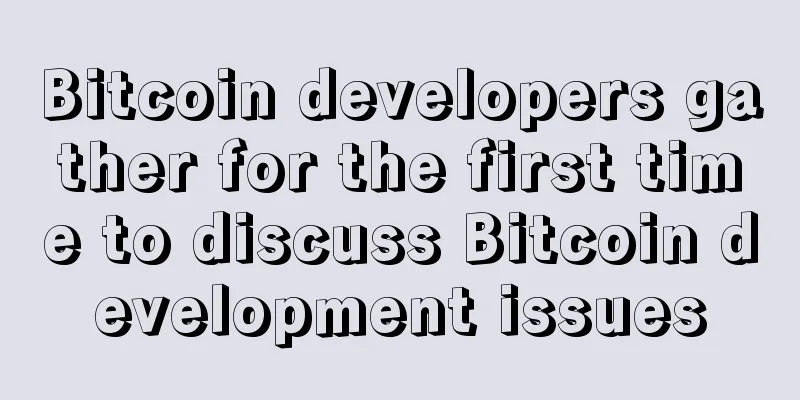Bitcoin developers gather for the first time to discuss Bitcoin development issues

|
The debate over the long-term viability of the bitcoin network has begun to heat up, with developers exploring potential technical issues facing the cryptocurrency at the Scaling Bitcoin conference in Montreal yesterday. One of the most anticipated events of the day was a discussion on how to incentivize participants in the bitcoin network to maintain a balance between any competing proposals, rather than just discussing positive or negative ones, be it Bitcoin Core, its replacement BIP proposal, or Bitcoin XT. The most intense moments of discussion took place during an afternoon workshop on topics including trust, the confidentiality that users demand of the bitcoin network, and how to manage the relationship between miners and developers. Although the roundtables were held under the Chatham House Rules, which allow participants to use information obtained at the conference freely but not to reveal the identities of speakers, some of the roundtables did make public statements. Among them, a famous scholar called for the overall spirit of the event, stating:
“This isn’t just about the block size,” one participant said. “This is about proving that when problems arise, we can solve them.” Bitcoin-NG debutsPerhaps the most newsworthy event of the day was the announcement by Cornell computer science graduate Ittay Eyal of Bitcoin-NG, a new solution for scaling the bitcoin network. Developed by Adem Efe Gencer, Emin Gün Sirer and Robbert Van Renesse, Bitcoin-NG seeks lower latency, higher throughput and greater security for the Bitcoin network by changing the Bitcoin mining process. The proposal suggests breaking the 25 BTC reward that miners win every ten minutes by finding a "random number." Bitcoin-NG will produce two types of blocks: key blocks, which contain no content but select a "leader," and microblocks, which contain only transaction content. About Bitcoin-NG“Only the leader can generate these private blocks,” Eyal explained. “The interval between key blocks will be 10 minutes, and the interval between micro blocks will be 10 seconds.” Under this system, key blocks will be given a reward for mining the block, with 40% of the fee going back to the leader and 60% being submitted to microblocks. Currently, the proposal is still in its early stages and the white paper has not yet been released. Economics and IncentivesThere were three discussions on economics and economic incentives that day, from BitTorrent creator Bram Cohen, physicist and entrepreneur Peter R, and researcher Miles Carlsten. The three talks focused on the question of how miners are paid, and how the larger network can expect current participants (miners) to continue participating when the existing incentive structure may change, either under the current Bitcoin design or under an alternative. Overall, Cohen expressed support for keeping the block limit at 1MB, which would help determine whether fees could one day replace block rewards.
Cohen also advocated for an upgrade to bitcoin wallets that would give users the flexibility to set minimum and maximum transaction fees. Scaling Bitcoin“Most people think of miners as finding nonces,” Peter R said. “Miners have another task, they produce a new type of digital commodity called block space, or ‘transaction data space.’” Additionally, Peter R delved into the economics of supply and demand, suggesting that the market could be expected to find an equilibrium even without raising the block size cap. “Economists also struggle with this problem,” Peter R said. “They assume a new rule, called the supply rule. Under this rule, producers will only plant apple trees if they can make more money growing apple trees. Supply and demand intersect in a free market equilibrium. Although demand can be considered infinite, the amount produced is still finite.” In this context, Peter R argues that block size is a “political measure” that, other than reducing potential productivity, will no longer have a clear benefit to the network. Open Source Anthropology ResearchThe day concluded with a talk by writer and part-time Bitcoin activist Gabriella Coleman, who provided an overview of how open source groups have historically addressed governance challenges. Coleman's work includes research on the general-purpose operating system Debian and the hacktivist group Anonymous. She told the crowd:
Coleman also suggested that Bitcoin is not well suited to a “benevolent dictator” model of governance, based on historical precedent. “The benevolent dictator model works if there’s a founder, and with something like Bitcoin, there’s no mythical figure.” ---- |
<<: Major financial institutions in the UK are being blackmailed by Bitcoin extortion groups
>>: Blockstream CEO: Bitcoin’s decentralized quality is a frog being boiled in warm water
Recommend
Palmistry features with strong premonition
Palmistry features with strong premonition Intuit...
A diagram of fortune-telling for a woman with an oval face
The oval face is a face shape that is more popula...
Is the love luck good for women with moles near their philtrum?
Speaking of love luck, I believe everyone is famil...
Yanzhi Chain starts locking investment. Founder Tan Bin shares five secrets of ICO investment
Since Yanzhi Chain started locking up investment ...
Is it good for a man to have a short little finger?
Is it good for a man to have a short little finge...
The face of a woman destined to have an unhappy marriage
The face of a woman destined to have an unhappy m...
UK blockchain firm Stratis raises €100,000 to develop blockchain applications
Crazy Review : Stratis, a blockchain solutions co...
What are the dangers of removing moles?
Everyone has moles to some extent, the only diffe...
No matter how hard you try, you are destined to have the appearance of a poor person.
It is said that everything is determined by fate ...
What are the moles that affect your career?
Moles have two sides, good and evil. The ones wit...
What does it mean if a woman has a mole on her earlobe?
Although not everyone has a mole on their earlobe...
Judging from the face whether the other person is a hot girl
As the saying goes, appearance is determined by t...
What kind of people are prone to holding grudges and being narrow-minded and not suitable for socializing?
People who love to hold grudges are really bad, b...
How does Phoenix Eye tell whether your career fortune is good or bad?
Eyes are the windows to one's soul, so they w...
Details of the Bitmain BTC theft: Hackers stole 617 BTC and moved them to Bittrex, significantly raising the price of MANA
According to Xiaocong News, Bitmain recently file...









